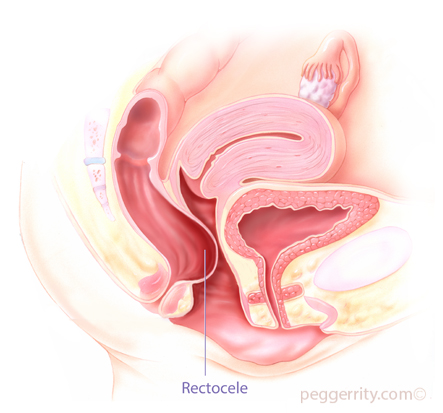Pelvic organ prolapse, or the dropping of an organ, is a very common condition, particularly among older women.
It’s has been estimated that half of women who have children will experience some form of prolapse later in life. Pelvic organ prolapse occurs when the pelvic floor muscles become weak or damaged and can no longer support the pelvic organs. While prolapse is not considered a life-threatening condition it may cause a great deal of discomfort and distress. While women with mild prolapse may have no symptoms or discomfort at all and may not be aware they have a prolapse. When symptoms do occur, however, they tend to be related to the organ that has prolapsed.
 The causes of pelvic organ prolapse are multifactorial and include genetics, childbirth, uterine fibroids, obesity, smoking, reduced estrogen levels which occurs with menopause, chronic disease, and conditions associated with chronic straining such as heavy lifting, constipation, chronic cough.
The causes of pelvic organ prolapse are multifactorial and include genetics, childbirth, uterine fibroids, obesity, smoking, reduced estrogen levels which occurs with menopause, chronic disease, and conditions associated with chronic straining such as heavy lifting, constipation, chronic cough.
There are a various types of prolapse that can occur and these are divided into three major categories according to the part of the vagina they affect: front wall, back wall or top of the vagina.

Cystocele
Cystocele is the herniation of the bladder into the vagina that occurs when the wall between the bladder and the vagina weakens, causing the bladder to sag into the vagina. This is the most common type of prolapse and oftentimes is associated with voiding problems such as incontinence, incomplete bladder emptying, urgency or frequency.

Rectocele
Rectocele is the herniation of the rectum into the vagina caused by a weakness in the wall between the rectum and the vagina that allows the rectum to bulge up into the back wall of the vagina. Women may experience pelvic pressure and difficulty emptying the bowel. Some women may need to insert a finger in their vagina and push the bowel back into place in order to empty their bowels.

Enterocele
Enterocele is the herniation of the small bowel into the vagina caused by a weakness in the wall of the upper vagina. Women may experience a heavy feeling in the vagina, a pulling or aching feeling in the lower back or pelvis that may be more noticeable after standing for a long time and is relieved with lying down.

Uterine Prolapse
Uterine prolapse is when the uterus descends into the vagina and at times may even drop past the opening of the vagina. Such prolapse may be coincident with prolapse of the bladder, bowel, and/or rectum.

Vaginal Vault Prolapse
Vaginal vault prolapse occurs when the upper portion of the vagina (apex) loses its normal shape and descends into the vagina and at times may even drop past the opening of the vagina. It can occur in over 15% of women following hysterectomy and may be coincident with prolapse of the bladder, bowel, and/or rectum.
